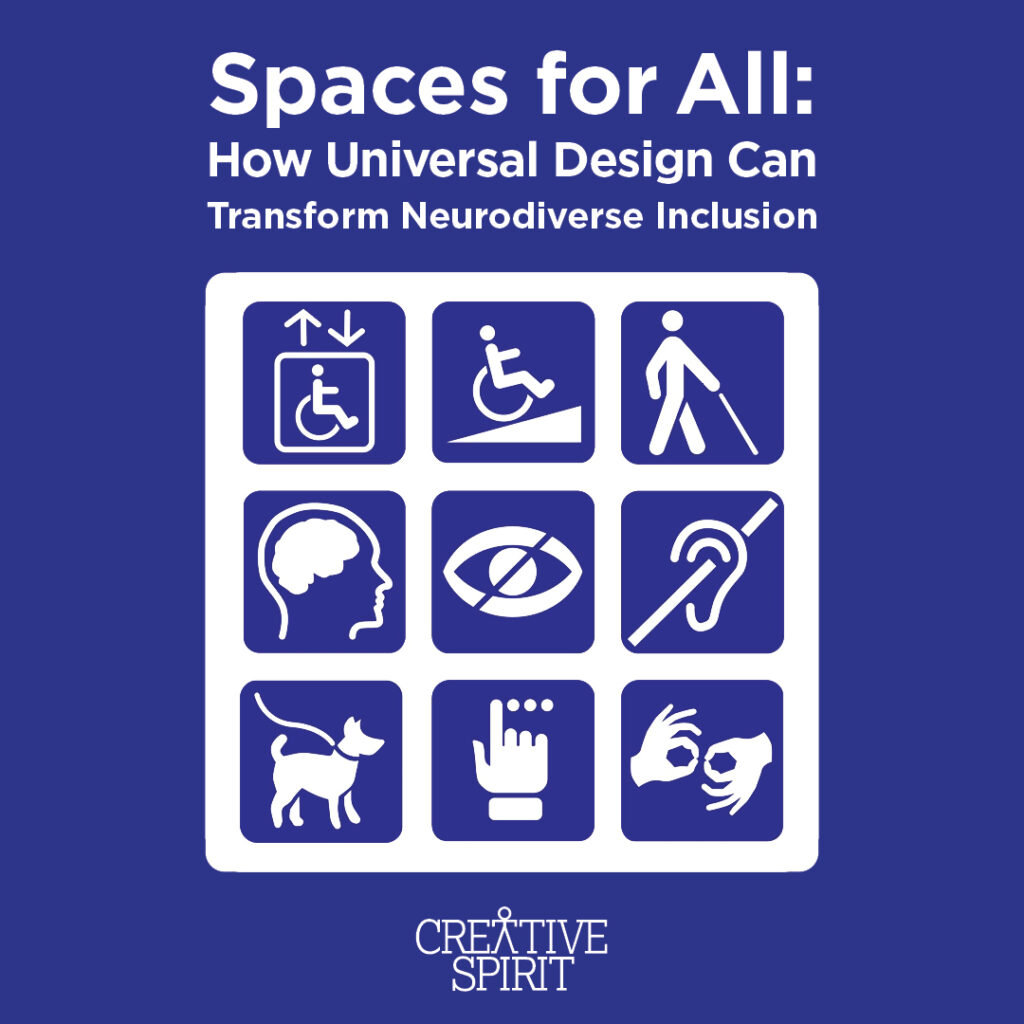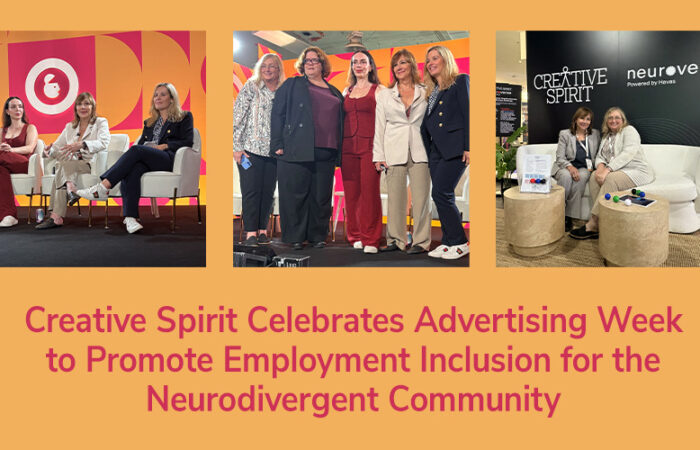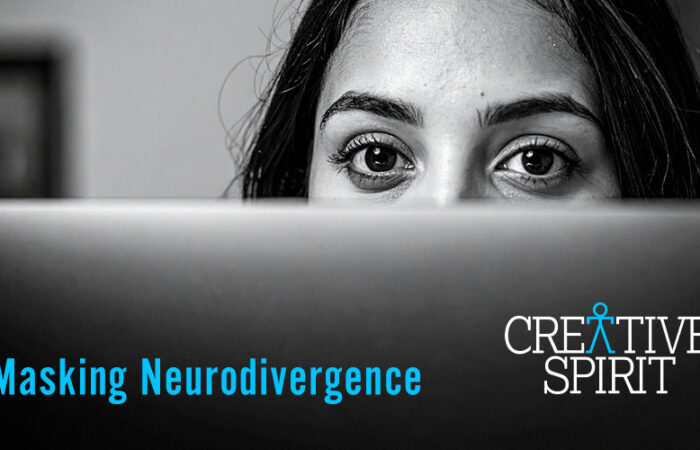Written By: Menachem Rephun, Communications Manager and Advocate

Imagine this: you’re an employee who is neurodivergent and/or with physical disabilities, approaching the office on your first day. When you get there, however, you find that the building lacks a wheelchair ramp, or other basic accommodations. Or you might be a neurodiverse student, but the school building doesn’t accommodate your needs. For millions of Americans, these challenges are encountered on a daily basis due to a lack of inclusive design. Fortunately, there is one groundbreaking approach that can make workplaces and schools fully neuro-inclusive and disabilities inclusive.
History of Universal Design
That philosophy is universal design. It’s an approach that strives to make buildings and public environments user-friendly and accessible, especially for people with neurodiversity/physical disabilities. Universal Design for Learning (UDL), UD’s educational counterpart, applies the same principles to classrooms and school curriculums. The concept of universal design originated in 1977, with a group of architects, product designers, engineers, and environmental design researchers led by American architect Ron Mace. Mace, who had contracted polio as a child, understood first-hand that many buildings were not wheelchair accessible. This experience inspired his work as an environment accessibility activist. It was also the basis for his role in passing North Carolina’s Chapter11X, the U.S.’s first-ever accessibility focused building code. It was Mace himself who first coined the term “universal design”.
Credit for universal accessibility is also due to Selwyn Goldsmith, a British architect and author best known for “Designing for the Disabled” (1963), a comprehensive architectural planning manual outlining disability access for facilities and buildings. In the 1960s, Goldsmith conceived the idea of “dropped kerbs.” Now better known as “curb cuts”, these are ramps grading down from the top surface of a sidewalk to the surface of an adjoining street, greatly improving wheelchair accessibility. Like Mace, Goldsmith had contracted polio, and was keenly aware of the accessibility barriers faced by many people with disabilities.
A key aspect of universal design is accounting for the needs of people with different neurodiverse conditions. For instance, people on the autism spectrum benefit from less sensory stimulation, while people with ADHD would be able to learn and work best in spaces that motivate and inspire them. “Neurodivergent people suffer from sensory overload but they can also experience sensory underload,” the design organization Modulyss explains. “This occurs when there’s a lack in these stimuli which can lead to boredom and disengagement.” By designing buildings with wheelchair ramps, elevators, indirect lighting, accessible stairs, wellness or quiet rooms, the right balance of sensory stimulation vs. non-overstimulation, and other accessibility features, workplaces and schools can be greatly improved in their accessibility for people with disabilities and/or neurodivergence.
Principles of Universal Design
The organization most actively involved in continuing and building on Mace and Goldsmith’s work has been the Centre for Excellence in Universal Design, which conducts original research and develops design recommendations for use on public buildings, homes, early learning and childcare settings, and residential care settings for senior citizens. The organization points out that universal design has been endorsed by the United Nations Convention for the Rights of Persons with Disabilities as the ideal approach to accessibility. The Centre for Excellence in Universal Design has also shared research-based guidelines for designing homes based on the principles of universal design, making them much more accommodating for seniors and people with disabilities. The philosophy of Universal Design is founded on 7 core principles:
1) Equitable Use – the design is useful, appealing, and marketable to people with diverse abilities, and avoids segregating or stigmatizing any users.
2) Flexibility in use – the design accommodates a diverse range of individual preferences and abilities; provides choice in methods of use; facilitates the user’s accuracy and precision; provides adaptability to the user’s pace; and accommodates right or left-handed access and use.
3) Simple and Intuitive Use – the design is easy to understand for all users, regardless of experience, language skills, knowledge, or current concentration level.
4) Perceptible Information – the design is effective in communicating necessary information to the user, regardless of sensory abilities or ambient conditions.
5) Tolerance for Error – the design minimizes adverse consequences for unintended or accidental actions.
6) Low Physical Effort – the design is able to be used comfortably and efficiently by all users without requiring too much effort or causing too much fatigue.
7) Physical Accessibility – appropriate size and space is provided for approach and use regardless of the user’s posture, body size, or mobility. If implemented correctly, these principles can make a huge difference for people with disabilities, especially in workplace settings, where physical accessibility is crucial to growth, productivity, and success.
Neurodiversity and Universal Design
Universal Design can also benefit employees and job candidates who are neurodivergent by being applied to the development of tools like text-to-speech, word prediction, spell and grammar checkers, and voice recognition. “Neurodiversity is one of the reasons why universal design is valued,” assistive technology expert David Banes writes in an essay for DifferentBrains.org, “and reflects the principle that we are all different and one size does not fit all.” Banes outlines the three core principles of Universal Design for Learning, which are multiple means of engagement; action/expression; and representation.
“For many a fluidity of approach to three principles will ensure that they can fully participate in the classroom, workplace or social setting,” Banes writes. “Because those settings are truly inclusive, not only of variations in the ways we think, but also because of other differences we can embrace – culture, language, context, age, and capacity.” Banes also offers actions and recommendations for how universal design should be implemented in work and classroom settings. These include settings that focus on “both what is to be achieved and how”; presenting materials in a variety of ways, including videos with captions and written summaries with action points; and creating environments with a flexible setup, “where space and noise can be controlled and privacy respected.”
Banes describes the recognition that classrooms, workspaces, and social settings can be utilized and configured in a variety of different ways as “the heart of engaging with universal design…understanding that those that use those spaces to learn, work or relax are all different helps us consider those that are neurodiverse, helping us achieve greater access for all, to the benefit of all.”
Essentially the educational counterpart of universal design, UDL began in 1984 with the work of Dr. David Rose and Dr. Anne Meyer, two researchers from the Harvard School of Graduate Education. Rose and Meyer founded the Center for Applied Specialized Technology, or CAST Inc, which redefined education for neurodiverse students through customized technology designed for use in the classroom. The organization embraced the “community model” of neurodiversity, focusing on “the disabilities of schools” rather than disabilities of the individual, and paralleled the changes taking place in architecture through implementing universal design.
Michael Perry, a consultant on universal design, builds on this effort by outlining universal design strategies that intersect with neurodiversity. In an article for WeAreProgressive.com, Perry lists some of these strategies, including not assuming that users are “typical”; presenting materials, signage, and graphics in different ways; utilizing multiple modes of communication; providing noise canceling headphones; providing a quiet room on each floor; and ensuring that controls and equipment can be positioned for both right and left-hand users. “We believe that by accommodating the needs of a neurodiverse community in the workplace, it will allow individuals and teams to flourish while providing a competitive advantage in the market,” Perry writes. “Having neurodiverse thinkers at the table provides creative insights on problem-solving, design thinking, and visual patterns. Embracing and supporting a neurodiverse team will lead to better outcomes.”
The 7 principles of universal design have led to many innovations in accessibility that have become so common they are often taken for granted. These include curb cuts and sidewalk ramps originally designed for wheelchair use, but which are now used by all; automatic door openers; cabinets with pull-out shelves; closed captioning for people who are deaf or hard of hearing; and low-floor buses with ramps that lower themselves when picking up passengers.
Legislation and Universal Design
Universal Design has been acknowledged in legislative efforts as well. In 2023, the New York City Council approved a bill to incorporate universal design features into city-funded housing developments. Universal Design for Learning has also become a part of many public policies in the U.S. in higher education, educational technology, K-12 education, and workforce development. Cast.org cites the 2016 Every Student Succeeds Act (ESSA), a reauthorization of the Elementary and Secondary Education Act of 1965, as an example of federal education law that endorses Universal Design for Learning. UDL has been a part of legislation like the 2016 National Education Technology Plan, and the Higher Education Opportunity Act of 2008. As American University School of Education explains, UDL is vital in making learning “more accessible, even in general education classrooms.”
They also point out that the UDL framework creates “more flexible classroom experiences, meaning that teachers can deliver meaningful learning opportunities to all students. This is especially critical given that even students with learning disabilities may spend most of their time in general education classrooms, not specialized spaces.” EdSurge.com points out that although most neurodiverse students spend at least 80% of their school day in general education classrooms, many general education teachers take only one class on how to support them. Universal Design for Learning can have a huge impact in changing this by taking the needs of neurodiverse students into account, and better preparing and training educators to help those students.
Benefits of Universal Design for Businesses
Along with improving inclusion in the classroom for neurodiverse students, universal design can benefit companies and employers as well. As Section.508.gov points out, universal design can help employers save money by investing in the most accessible products from the start; innovate and create products for everyone regardless of ability; and create tools and products that are easier for everyone to use. And as the Centre for Excellence in Universal Design explains, Universal Design “enables companies to design products and services and environments that more closely match consumer expectations and needs.”
The organization also stresses the importance and social benefits of universal design in light of demographic changes expected to take place over the next 30 years, including a growing percentage of people over 80, and projections that children born today will live to 100 years old. “Within the coming decades in Europe and Ireland, the number of people who are available and capable of assisting and caring for older people will decrease considerably,” the organization writes, “while the number of people living with physical, sensory, mental health or intellectual and neurodiverse conditions is increasing, as is the life expectancy of people with particularly severe or multiple impairments.” This makes implementing universal design more imperative than ever.
The Importance of Universal Design
At a time when the neurodivergent population is growing substantially, universal design is a practical, efficient, and cost-effective approach to redefining accessibility. Over the past several decades, universal design has already made a difference, but there’s still significant room for improvement. Whether you’re a student, an employee, or anyone else in the disabilities/neurodiverse community, you deserve representation and inclusion in public life, and to know that you are valued and seen on the same level as your peers. A 2023 report from the organization Advocates for Children found that less than 1 in 3 New York City public schools are accessible to students with disabilities. In 2024, no one should have to find schools, offices, or public environments inaccessible due to lack of wheelchair access or other barriers to mobility.
That’s why we believe universal design should become an integral part of every classroom, office, and public environment, as well as in tools used for assistive communication. All employers can and should implement universal design without hesitation to make their companies fully accessible, accommodating, and inclusive for neurodiverse employees and those with physical disabilities. Students who are neurodiverse or have physical disabilities should and must be able to grow and succeed in school environments that fully accommodate their needs. Neurodiverse employees (or those who also have physical disabilities) deserve the right to work in environments that factor in their needs. Universal design is a philosophy developed by and for people with disabilities, that offers the principles and the proven framework to make that inclusion happen. Let’s work together to make universal design in all buildings and public spaces truly “universal”.
Sources:
2. https://universaldesign.ie/about-universal-design/the-7-principles
3. https://differentbrains.org/addressing-neurodiversity-through-universal-design/
4. https://www.weareprogressive.com/insights/addressing-neurodiversity-through-universal-design




